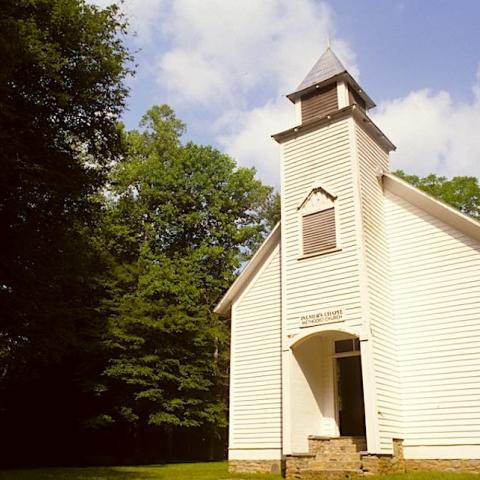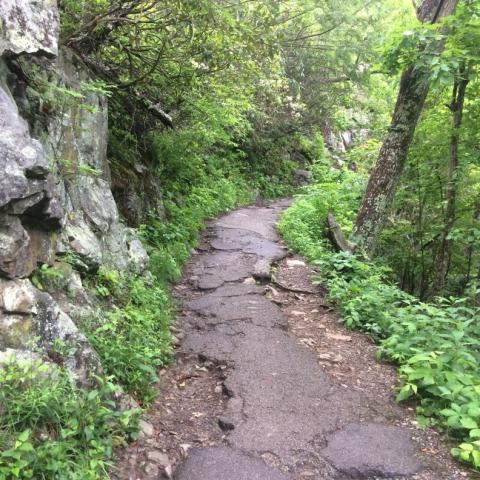
The release of three fish into Abrams Creek last week: smoky madtom (endangered), yellowfin madtom (threatened) and Citico darter (endangered)/NPS
Recognizing its incredible diversity of stream life and years of efforts to conserve that diversity, the Little Tennessee River basin, which includes the Abrams Creek drainage in Great Smoky Mountains National Park, has been designated the nation’s first Native Fish Conservation Area.
“The Native Fish Conservation Area designation reflects an integrated and cooperative approach to stream conservation,” said Trout Unlimited’s Damon Hearne. “We’re recognizing the importance of these streams to the region’s identity, and we’re committing to a collaborative approach to stream conservation that looks at the entire river basin, and incorporates biological needs and local community values into river management.”
In 2008, Trout Unlimited, Federation of Fly Fishers, and the Fisheries Conservation Foundation came together to develop a new way to approach native fish conservation on a large scale, based on coordination at local, state, and federal levels while recognizing the importance of recreation and multiple economic river uses. The result of that meeting is the Native Fish Conservation Area designation. Native Fish Conservation Areas (NFCAs) are river basins with a focus on stream management for the conservation and restoration of native fish and other aquatic life, paired with compatible recreational and commercial uses, with the end goal of ensuring the long-term survival of native aquatic species. The North Carolina Wildlife Federation brought the concept to North Carolina and was instrumental in identifying the Little Tennessee River basin as a conservation area.
The Little Tennessee River basin stretches from North Georgia, across North Carolina, and into Tennessee, and includes the Little Tennessee, Tuckasegee, Oconaluftee, Nantahala, Tellico, and Cheoah Rivers, along with all their tributaries. It’s home to more than 100 species of fish, and 41 aquatic animals considered rare at the federal or state level, including a handful found nowhere else in the world such as the Citico darter, smoky madtom, and Little Tennessee crayfish.
“This designation highlights what a lot of folks who work in river conservation have known for years – the Little Tennessee River has an incredible diversity of life and has been the scene of myriad efforts, many groundbreaking, to conserve that diversity,” said the North Carolina Wildlife Federation’s Fred Harris, who was instrumental in bringing this designation to the Little Tennessee River basin.
Many groups have been working to conserve aquatic wildlife in the Little Tennessee for years and this NFCA designation seeks to coordinate and reinforce that work. NFCA partner organizations have carried out many conservation projects:
- Reintroduction of four endangered fishes into Abrams Creek, Great Smoky Mountains National Park;
- The reintroduction of four endangered fishes into Tellico River, Cherokee National Forest;
- The return of water to a previously dewatered stretch of the Cheoah River;
- The return of the threatened Spotfin chub to the Cheoah River;
- Boosting the numbers of Appalachian elktoe mussels in the Cheoah River;
- Removal of the Dillsboro Dam from the Tuckasegee River;
- Captive rearing and stocking of the rare Sicklefin redhorse;
- Conservation of the Needmore Tract on the Little Tennessee River;
- Stream-based field trips for hundreds of middle school students across the basin;
- Re-establishment of aquatic passage for brook trout and other cool-water species by means of small dams and culvert removal.
“Our expectation is that the designation will bring attention to the streams of this river basin, the communities along the river banks, and opportunities to conserve and enjoy these waters,” said Jason Meador of the Land Trust for the Little Tennessee.
The designation is supported by the Little Tennessee River Basin Native Fish Conservation Partnership, which includes American Rivers, Conservation Fisheries, Inc., Eastern Band of Cherokee Indians, Georgia Department of Natural Resources, Land Trust for the Little Tennessee, National Park Service, N.C. Wildlife Resources Commission, Sierra Club - Tennessee Chapter, Tennessee Department of Environment and Conservation, Tennessee Valley Authority, Tennessee Wildlife Resources Agency, Trout Unlimited, U.S. Fish and Wildlife Service, U.S. Forest Service, and Watershed Association of the Tuckasegee River.




 Support Essential Coverage of Essential Places
Support Essential Coverage of Essential Places






